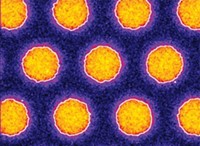Advertisement
Grab your lab coat. Let's get started
Welcome!
Welcome!
Create an account below to get 6 C&EN articles per month, receive newsletters and more - all free.
It seems this is your first time logging in online. Please enter the following information to continue.
As an ACS member you automatically get access to this site. All we need is few more details to create your reading experience.
Not you? Sign in with a different account.
Not you? Sign in with a different account.
ERROR 1
ERROR 1
ERROR 2
ERROR 2
ERROR 2
ERROR 2
ERROR 2
Password and Confirm password must match.
If you have an ACS member number, please enter it here so we can link this account to your membership. (optional)
ERROR 2
ACS values your privacy. By submitting your information, you are gaining access to C&EN and subscribing to our weekly newsletter. We use the information you provide to make your reading experience better, and we will never sell your data to third party members.
Synthesis
Catching Catalyst Particles In Action
September 22, 2008
| A version of this story appeared in
Volume 86, Issue 38
Analytical methods for probing catalytic nanocrystals while they mediate chemical reactions can uncover insights that lead to better catalysts. Designing those methods, however, remains a formidable challenge. Two teams of researchers have taken a step in that direction by demonstrating techniques for monitoring catalyzed oxidation and reduction reactions. In one case, Paul Mulvaney and coworkers of the University of Melbourne, in Australia, combined an analytical technique known as dark field microscopy with surface plasmon spectroscopy to directly measure the single-particle reaction rates of the fundamental steps of ascorbic acid oxidation by dissolved oxygen on gold nanoparticles (Nat. Nanotechnol., DOI:10.1038/nnano.2008.246). The particles hasten the reaction by serving as electron reservoirs that transfer charge from ascorbic acid to oxygen. In the other study, Andreas Stierle of the Max Planck Institute for Metal Research, in Stuttgart, Germany, and coworkers combined X-ray diffraction and transmission electron microscopy to probe oxidation-induced shape changes to the surfaces of rhodium nanoparticles supported on magnesium oxide (Science 2008, 321, 1654). They found that crystal morphology changes, which can be reversed by CO exposure, are driven by the formation of an oxygen-rhodium-oxygen surface oxide film that stabilizes the nanoparticles.





Join the conversation
Contact the reporter
Submit a Letter to the Editor for publication
Engage with us on Twitter